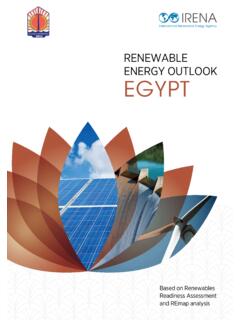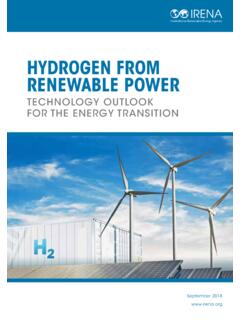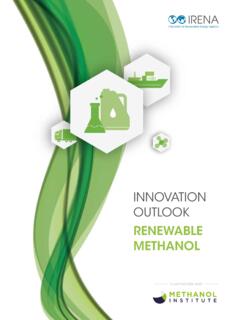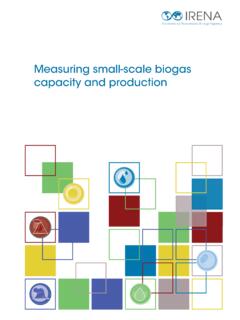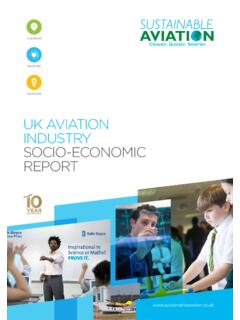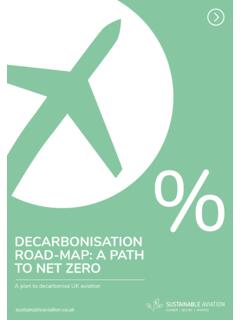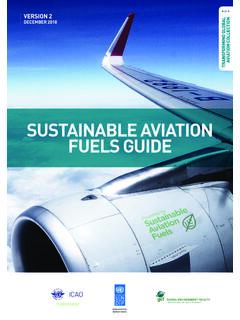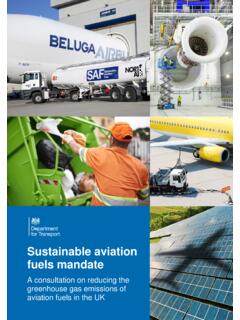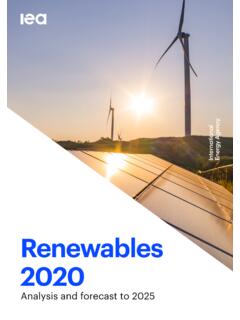Transcription of Green hydrogen cost reduction: Scaling up electrolysers to ...
1 Green hydrogen COST REDUCTIONSCALING UP electrolysers TO MEET THE C CLIMATE GOALH2O2 Green hydrogen COST REDUCTION2 IRENA 2020 Unless otherwise stated, material in this publication may be freely used, shared, copied, reproduced, printed and/or stored, provided that appropriate acknowledgement is given of IRENA as the source and copyright holder. Material in this publication that is attributed to third parties may be subject to separate terms of use and restrictions, and appropriate permissions from these third parties may need to be secured before any use of such : 978-92-9260-295-6 Citation: IRENA (2020), Green hydrogen Cost Reduction: Scaling up electrolysers to Meet the C Climate Goal, International Renewable Energy Agency, Abu report benefited from input and review of the following experts.
2 Katherine Ayers and Egil Rasten (NEL), Karan Bagga (ThyssenKrupp), Bart Biebuyck and Mirela Atanasiu (FCH JU), Luigi Crema and Martina Trini (Bruno Kessler Foundation), Tim Karlsson (IPHE), Ruud Kempener (European Commission), Francesco Massari (XBEC), Corky Mittelsteadt (Giner ELX), Samir Rachidi (IRESEN), Jan-Justus Schmidt (Enapter), Toshiyuki Shirai (METI/Japan), Andrew Smeltz (Denora), Denis Thomas (Cummins-Hydrogenics), Kasper Tipsmark ( Green hydrogen Systems), Eveline Weidner (EU JRC) and Frank Wouters (EU-GCC clean energy council). Emanuele Bianco, Paul Durrant, Barbara Jinks, Seungwoo Kang, Paul Komor and Stephanie Weckend (IRENA) also provided valuable report was edited by Jonathan : Emanuele Taibi, Herib Blanco and Raul Miranda (IRENA) and Marcelo Carmo (Forschungszentrum J lich).
3 The study was supervised by Dolf Gielen and Roland Roesch (IRENA).Report available online: For questions or to provide feedback: is grateful for the support of the German Federal Ministry for Economic Affairs and Energy (BMWI) of the Federal Republic of Germany and the Ministry of Economy, Trade and Industry (METI) of Japan in producing this publication and the material herein are provided as is . All reasonable precautions have been taken by IRENA to verify the reliability of the material in this publication. However, neither IRENA nor any of its officials, agents, data or other third-party content providers provides a warranty of any kind, either expressed or implied, and they accept no responsibility or liability for any consequence of use of the publication or material herein.
4 The information contained herein does not necessarily represent the views of all Members of IRENA. The mention of specific companies or certain projects or products does not imply that they are endorsed or recommended by IRENA in preference to others of a similar nature that are not mentioned. The designations employed and the presentation of material herein do not imply the expression of any opinion on the part of IRENA concerning the legal status of any region, country, territory, city or area or of its authorities, or concerning the delimitation of frontiers or 2020 may be remembered for the tragic COVID-19 crisis, it has also been an unprecedented year for the global energy transition and the growing momentum of hydrogen technology.
5 Many countries, in aligning their pandemic response with longer-term goals, have announced strategies to develop hydrogen as a key energy carrier. In parallel, numerous countries, cities and companies have adopted net-zero targets for energy-related carbon dioxide (CO2) emissions, bringing the need for hydrogen to the not all types of hydrogen are compatible with sustainable, climate-safe energy use or net-zero emissions. Only Green hydrogen produced with electricity from renewable sources fulfils these criteria, which also entail avoiding grey and hybrid blue hydrogen .
6 Green hydrogen forms a cornerstone of the shift away from fossil fuels. Its uptake will be essential for sectors like aviation , international shipping and heavy industry, where energy intensity is high and emissions are hardest to abate. Green hydrogen , however, cannot take off without widespread and co-ordinated support across the value chain. The Collaborative Framework on Green hydrogen , set up by the International Renewable Energy Agency (IRENA) in mid-2020, offers a platform to strengthen support in co-operation with IRENA s member countries and partners.
7 IRENA studies in 2018-19 highlighted the technical and economic feasibility, while a recent policy-making guide outlines key enabling policies for Green hydrogen . Business models, for their part, require careful consideration. The present study, Green hydrogen cost reduction, adds a vital strategic building block, providing insights on how to make this clean supply option widely available and five countries had announced their hydrogen strategies by the end of 2019. A year on, nearly 20 have done so, with at least 10 more set to follow within months.
8 Industry investors plan at least 25 gigawatts (GW) of electrolyser capacity for Green hydrogen by 2026. Still, far steeper growth is needed in renewable power as well as Green hydrogen capacity to fulfil ambitious climate goals and hold the rise in average global temperatures at C. FOREWORDE nergy diversification, when based on renewables, can eliminate emissions and fulfil climate pledges. Green hydrogen uptake, of course, would reduce the need for carbon capture by simply providing cleaner significant barriers remain.
9 Green hydrogen costs, on average, between two and three times more to make than blue hydrogen , with the true potential and viability of the latter requiring further investigation. With electricity input accounting for much of the production cost for Green hydrogen , falling renewable power costs will narrow the gap. Attention, meanwhile, must shift to the second-largest cost component, electrolysers . This report explores strategies and policies to drive innovation, cut costs for electrolysers and make Green hydrogen a least-cost solution wherever needed.
10 With larger production facilities, design standardisation and insights from early adopters, the proposed strategies could cut costs by 40% in the short term and up to 80% in the long term, this study finds. In price terms, the resulting Green hydrogen could fall below USD 2 per kilogram mark low enough to compete within a decade. This opens the way for large-scale manufacturing capacity, new jobs and economic growth Already, Green hydrogen s improving cost projections represent an amazing step forward; until just a few months ago, such results were not expected before mid-century.
